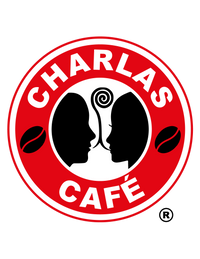The history of coffee and its cultivation in Mexico
There are many texts referring to the discovery of coffee as we know it. Learn about some of them and how it arrived in Mexico.
There are many stories about the discovery of coffee as we know it, some dating back to 1140 in countries as different as Abyssinia, Ethiopia and Arabia.
Whether discovered by shepherds or monks, whether intentionally or accidentally, the fact is that today we can enjoy a delicious cup of coffee in the morning.

In Mexico, this is one of the most popular drinks and its production in the country is so extensive that it is currently the eleventh largest producer in the world. Introduced in 1795, it is a crop of enormous significance not only from an economic and social point of view, but also cultural and ecological.
We are fortunate to live in a country that is vast in culture, history and gastronomy. The fertile lands allow the planting of hundreds of products, including the one that concerns us in this space, coffee. In this post we want to tell you a little about the fortunate arrival of this grain to Mexico, its proliferation, popularization and how it has remained embedded in our hearts and in our home.

To reach our table and delight us every morning with its flavor, coffee had to travel long roads from Ethiopia, its country of origin, and break strong stigmas. Fortunately, the flavor and qualities of this drink make anyone fall in love, so it was not difficult for it to soon begin to expand throughout the rest of the world.

Following the steps of the integration of coffee to the American continent and Mexico, we find the legend of a French gentleman named Gabriel Mathieu du Clieu, who in 1723 was captain of the infantry in Martinique, when he was called to return to France, he had the brilliant idea of taking with him a coffee plant from the botanical gardens of that country, when he returned to the island of Martinique with his new acquisition, they were caught in a storm followed by calm waters, so the trip was delayed for quite a while, the water reserves were not sufficient so they had to ration their consumption, and de Clieu, determined to take the coffee plant to Martinique, shared his water ration with the plant, managing to get it to arrive alive. to the island's plantations.

This plant that accompanied du Clieu is considered by some to be the origin of coffee trees in the Antilles and in most of America. It is believed that the first harvest took place in 1726, which was very abundant, so much so that it reached the islands of Guadeloupe, and was later introduced to Haiti and Santo Domingo.
Many more travelers contributed to the expansion of coffee to the rest of America, among them the Englishman Nicholas Lewis, who in 1730, introduced the coffee plant to Jamaica. Those responsible for coffee reaching the Philippines were some Spanish missionaries of unknown name, who left the plant in Java in 1740. It arrived in Cuba thanks to José Antonio Gelabert, by then in the year 1748.
There are records that coffee arrived in Mexico from the Antilles when it was 1790, it entered directly through Veracruz, where it began to be cultivated and exported, arriving in 1802, Juan Antonio Gómez was responsible for intensifying cultivation in this state in the year 1817, although many point out that coffee was introduced to our lands directly from Cuba.

The coffee that arrived in the state of Chiapas was introduced directly from Guatemala, and the coffee that grows in Michoacán arrived from the port of Moka in Yemen, where it would spread to Jalisco, Nayarit and Colima.
It took a couple of decades before coffee became famous in the country, as chocolate was well-rooted in the drinking habits of Mexicans, but once the palate and the sense of smell acquired a taste for this drink, it did not leave the hearts of all consumers and the first coffee shops began to emerge. The first coffee shop on record was opened at the end of the 18th century on Tacuba Street, in the historic center of Mexico City, becoming one of the favorite spots for gatherings and meetings of citizens and aristocratic figures.

By the end of the 19th century, coffee shops began to expand throughout the country, the main ones in the capital being the El Cazador and Minerva cafés. Later, the famous Café Colón, París and Monte Carlo opened, the historic cafés La Paix and La Mansión Dorée also emerged. By the early years of the 20th century, the famous Sanborn's, Café Tacuba, Café la Habana and Café Madrid opened their doors. Along with these cafés, one of the most deep-rooted traditions in the gastronomy of the center of the country emerged, the Chinese cafés. There were also numerous cafés inside the most luxurious hotels, some of which are still standing and serving the most exquisite coffee with history and centuries of tradition.
In Michoacán there are also records of extremely famous coffee shops, such as the one located inside the Hotel de la Soledad, which was classified by the New York painter FA Hopkinson Smith as "the best in the world."

Coffee is undoubtedly one of the best and most beloved foods introduced through crossbreeding, reaching a land that awaited it with open arms.
The coffee tradition in Mexico has not ended, this bean is here to stay and today coffee shops offer the purest and most excellent specialty bean, introducing new filtering techniques, making this sublime tradition a new sensory experience.
Credits: Pdg Español, Gob.mx. Amcc.org. The world of coffee.











Leave a comment